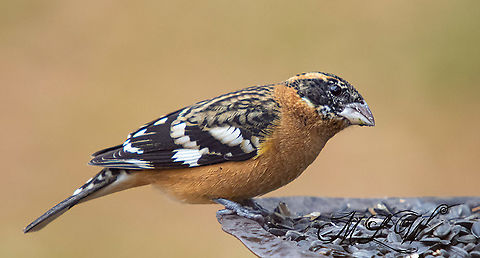
Appearance
The black-headed grosbeak's approximate length is 18–19 cm; it is similar in size to a common starling. As per its name, the male has a black head, and black wings and tail with prominent white patches.Its breast is dark to tawny orange in color, and its belly is yellow. The female has a brown head, neck, and back with sparrow-like black streaks. She also has white streaks down the middle of her head, over her eyes, and on her cheeks. Her breast is white, and wings and tail are grayish-brown with two white wing bars and yellowish wing edges.
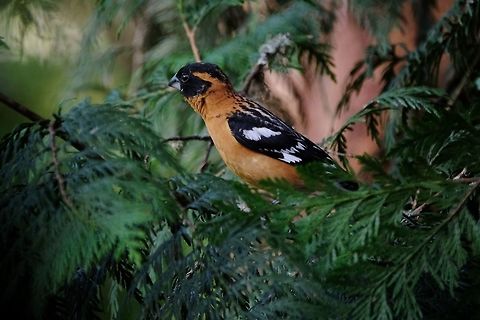
Distribution
Black-headed grosbeaks range from the Pacific Coast to the middle of the US Great Plains and from southwestern Canada to the mountains of Mexico.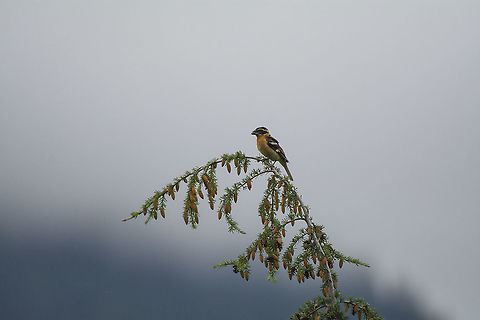
Behavior
Black-headed grosbeaks frequently sing from prominent perches. Both the male and female sing, but have different songs, and both are known to sing from the nest while incubating. When trying to court a female, males fly with their wings and tails spread. They forage in the foliage, on the ground, or in low vegetation and are prominent berry eaters.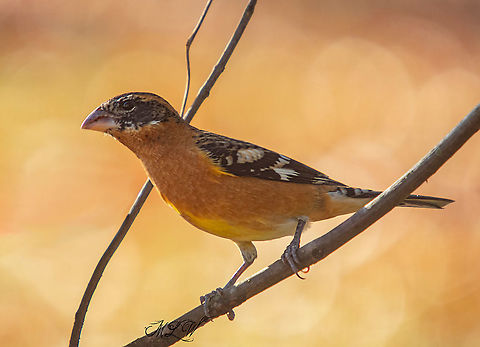
Habitat
The black-headed grosbeak prefers to live in deciduous and mixed wooded areas. It likes to be in areas with large trees and thick bushes, such as patches of broadleaved trees and shrubs within conifer forests, including streamside corridors, river bottoms, lakeshores, wetlands, and suburban areas.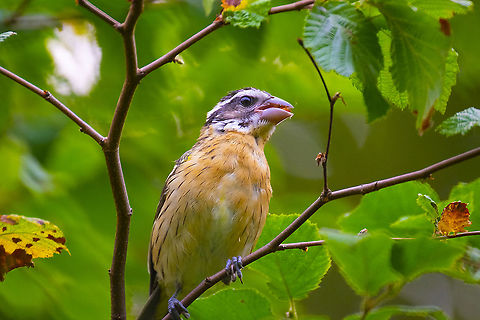
Reproduction
Females build nests among the dense foliage on an outer branch of tall broadleaved trees or shrubs, 3–35 ft above ground. They occasionally build in dense shrubs such as blackberry. The nest is in the shape of an open saucer, made of fine grass, rootlets, twigs, bark, and conifer needles.It is often lined with rootlets, hair, and fine plant material. The female lays two to five pale green, blue, or gray eggs that are spotted with reddish and dark brown.
The eggs are incubated by the male and female for 12–14 days. After the eggs have hatched, the fledglings leave the nest in about 11 or 12 days, but they are unable to fly for another two weeks.
The young are fed by both adults. The black-headed grosbeak's monogamy is under study, but pair bonds generally last for only one breeding season. They typically have one brood per season, though two broods have been documented in foothills of the Sacramento Valley in California.
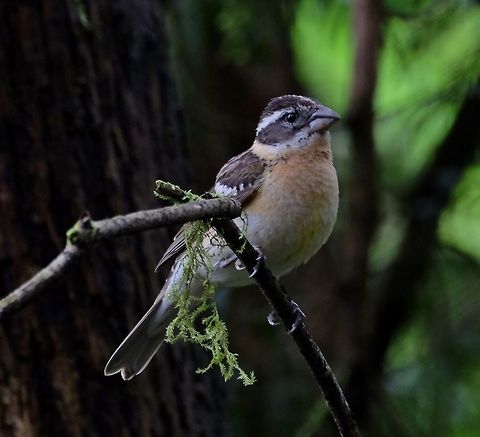
Food
The black-headed grosbeak eats pine and other seeds, berries, insects and spiders, and fruit. During the summer, it mostly eats spiders, snails, and insects. It is one of the few birds that can safely eat the poisonous monarch butterfly.In their wintering grounds, this grosbeak consumes many monarchs and many seeds. It comes to bird feeders for sunflower and other types of seed, and fruit, and also joins northern orioles at feeders with grape jelly.
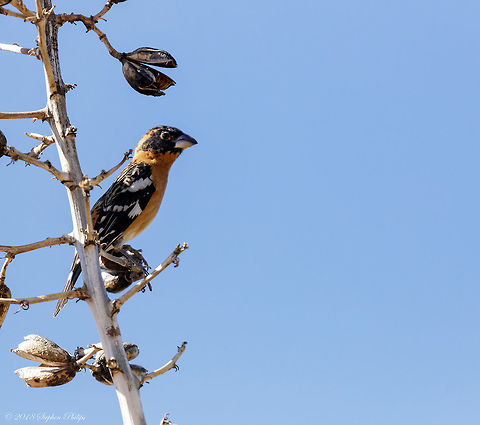
Migration
US and Canadian birds are highly migratory, wintering in Mexico. In the Great Plains, the range of the black-headed grosbeak and the rose-breasted grosbeak overlap and they have interbred somewhat. After the breeding season, they tend to seek out berry-rich areas. They migrate south early in the fall and return to the north late in the spring and have been known to do so in flocks. They also like to live in the desert in Arizona.References:
Some text fragments are auto parsed from Wikipedia.